The top of our neighborhood is a great place to view the impressive dust storms that roll into the Phoenix metro area a few times during each monsoon season. My view is to the south, across Papago Park towards South Mountain. This is the direction the storms often come from, the result of a tall cumulous cloud collapsing in a down-draft blast that kicks up agricultural and desert soils in a shock wave of granular murk. They move fast and arrive with a gust of hot wind and chemical-laden grit. I walked up to Oak street to watch this one come in. (Click on each photo to enlarge. All photos A.Shock).
Here’s what the sky to the south looked like pre-haboob. You can just see the brown glow of the dust cloud low to the left of center, a dirt-colored sliver of sky between the two houses, behind the utility pole. The rest are local gray storm clouds. The low sun is the bright glare on the right:

It only took a few minutes for the javelina-brown snout of the haboob (previous snout here) to reach the metro area. In the photo below, it’s engulfing Sky Harbor airport:
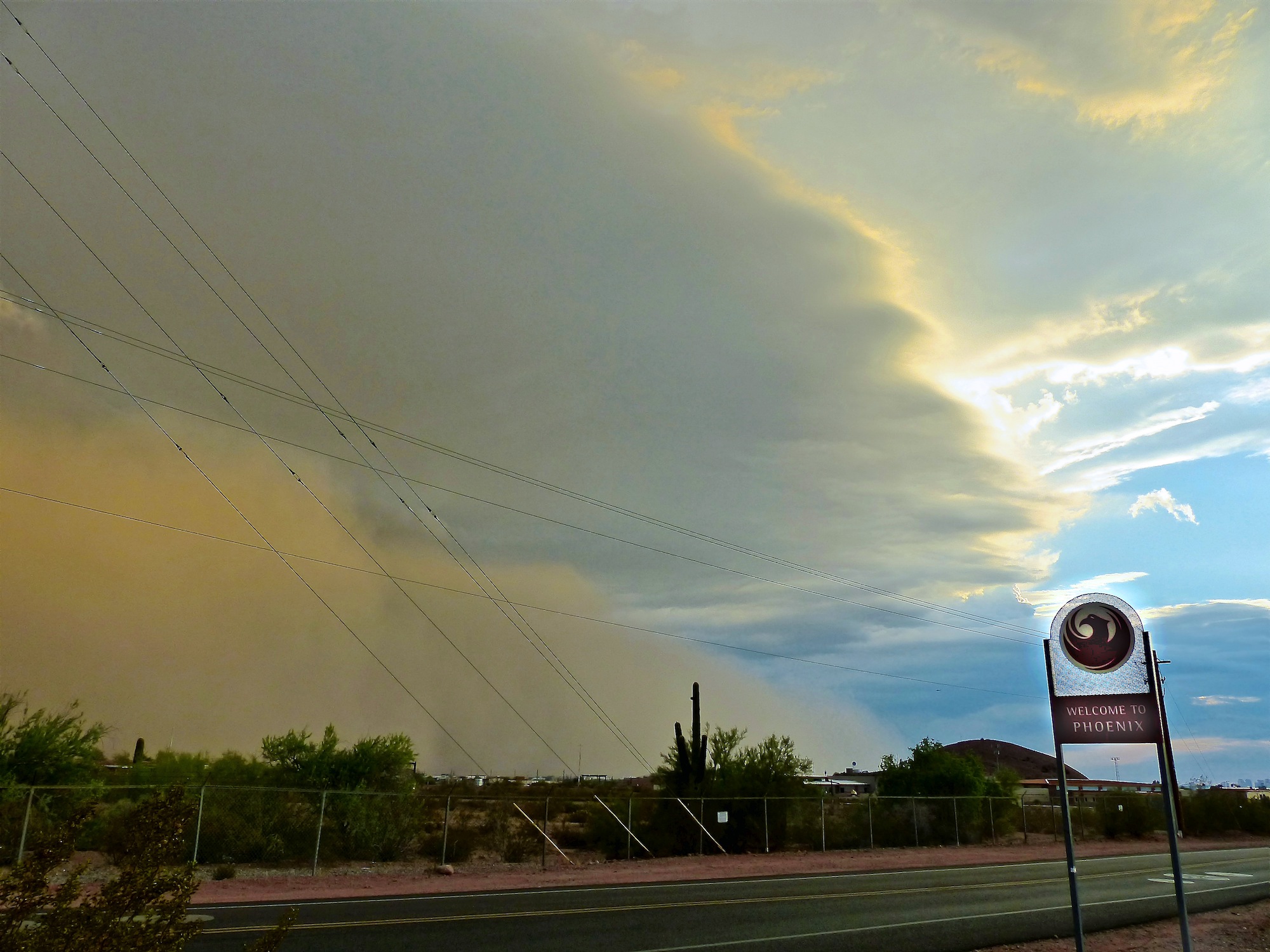
The photo above is looking southwest. The front of the dust cloud stretched to the east as well. Here’s looking towards the east valley just as the edge of the storm reached our neighborhood:
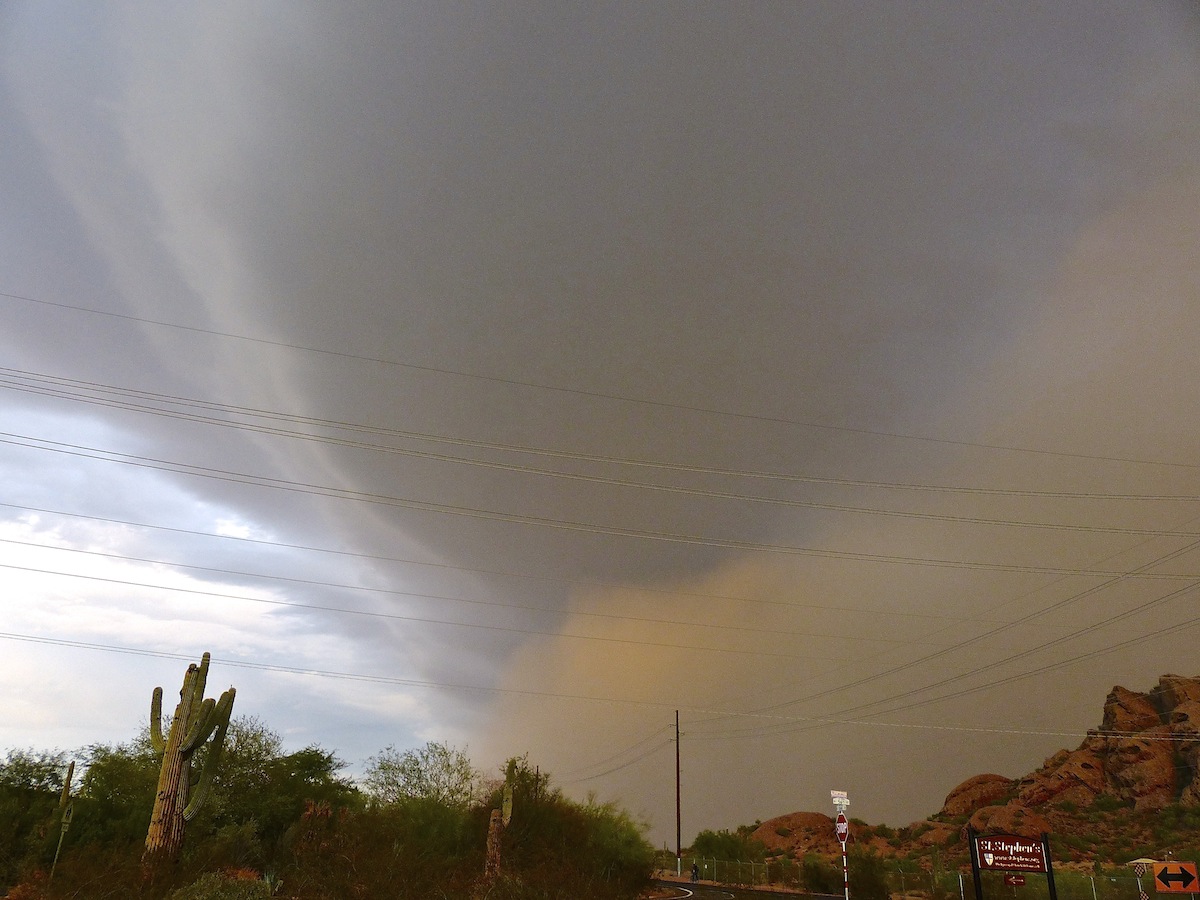
The gray thunderstorm above the dust cloud was biding its time. It brought some ominous cloud-forms along for the ride. If the front edge of the dust is the snout of the Heavenly Javelina, these clouds were hanging down like her teats:
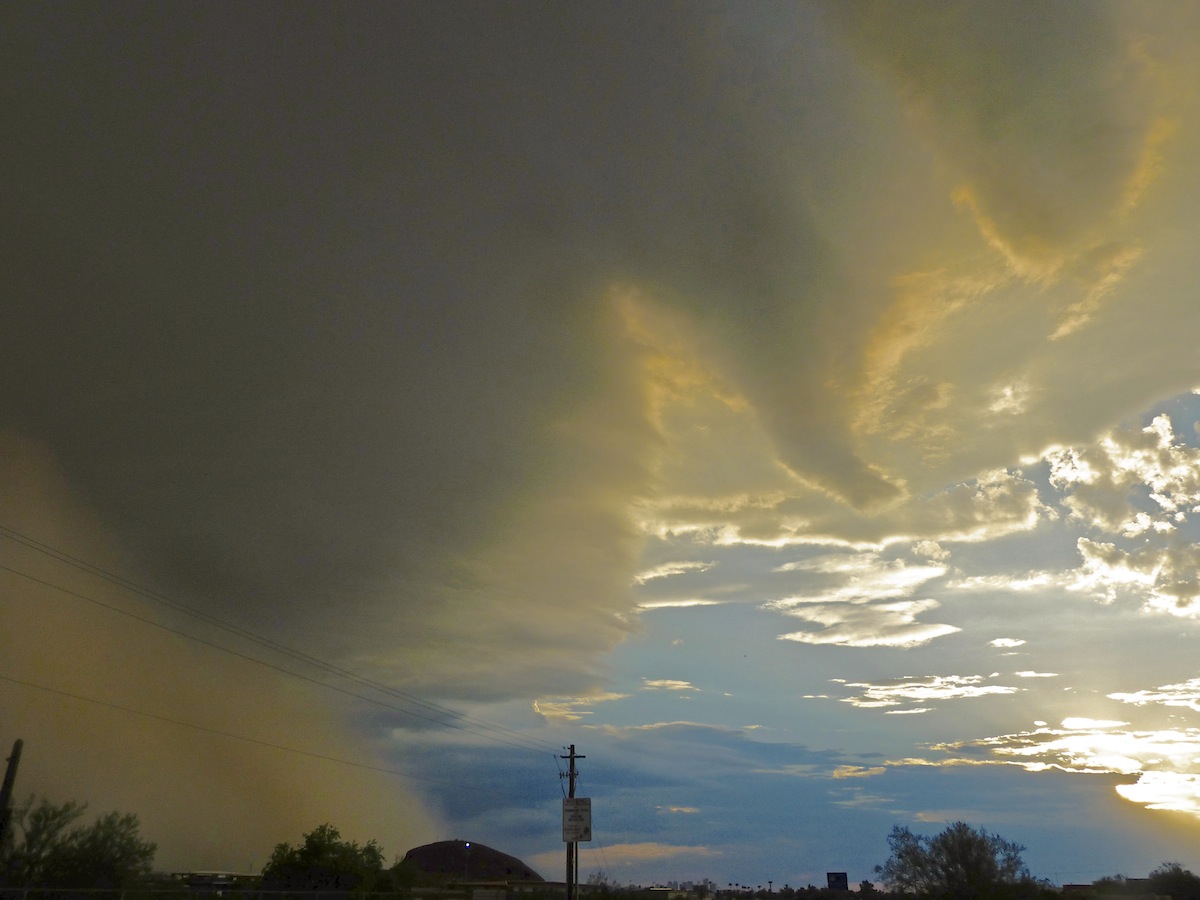
Our part of town was fortunate: just a blast of gritty wind, a smattering of raindrops, some window-rattling lightning, and it was over in half an hour. Other neighborhoods weren’t so lucky: stronger winds downed trees, there were flooded roads, and some lightning strikes that crisped a tree or two.
Yes, earlier this summer we did humanely trap the Enormous Family of Rock Squirrels who were living in our attic and relocated them to a squirrel nirvana. This created a Squirrel Vacuum in our yard, and everyone knows that Nature — like every cat but this one — Abhors a Vacuum (and also being dressed up as a shark). So, it didn’t take long — already the Squirrel Vacuum has been filled:
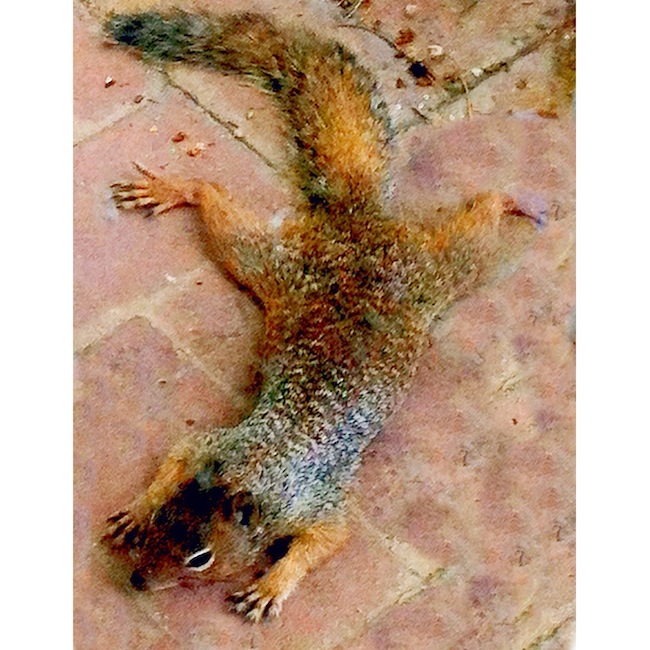
This just-about-full-grown young one has been closing in on our yard (we’ve heard his loud inquisitive chirps growing progressively closer from down the block), and he finally got here. He looks like he dropped from a great height, but he’s just pressed belly-flat to the cool bricks, taking a break from scouring the back porch for yummies — you can’t see, but his cheeks are packed full. The rugged nature of the image is due to being taken through blinds through a window at a steep angle with my cellphone. Pesky, yes, but Oh So Very Cute. I offer this photo for the enjoyment of those readers who will not be plagued with the patter of little gnawing teeth overhead.
Meanwhile, if you’re in Tucson , today is the last day of the Tucson Bird and Wildlife Festival at the Riverpark Inn. The field trips are full, but the Nature Expo is free and is open from 10am to 2pm today (Sunday Aug 18 2013; more info << left, click to make legibly large.). How I come to still have this Monsoon Droplet Beastie Pitcher (below) on the shelf is hard to imagine! So if you haven’t stopped by the Three Star Owl booth to say Hi, now’s your chance! And if you have, stop by again!

I haven’t been posting here much recently, due to circumstances.
Circumstances like deadlines, ants, and the fact that I may be about to lose the entire file structure of my photos on the computer as a result of trying to solve the problem of a broken DVD player (a chain of events as obtuse as it sounds) — all the standard impediments to writing. So instead of shrieking, I choose to post this photo of an excellent organism we saw yesterday in the skirts of the Pinal Mountains:
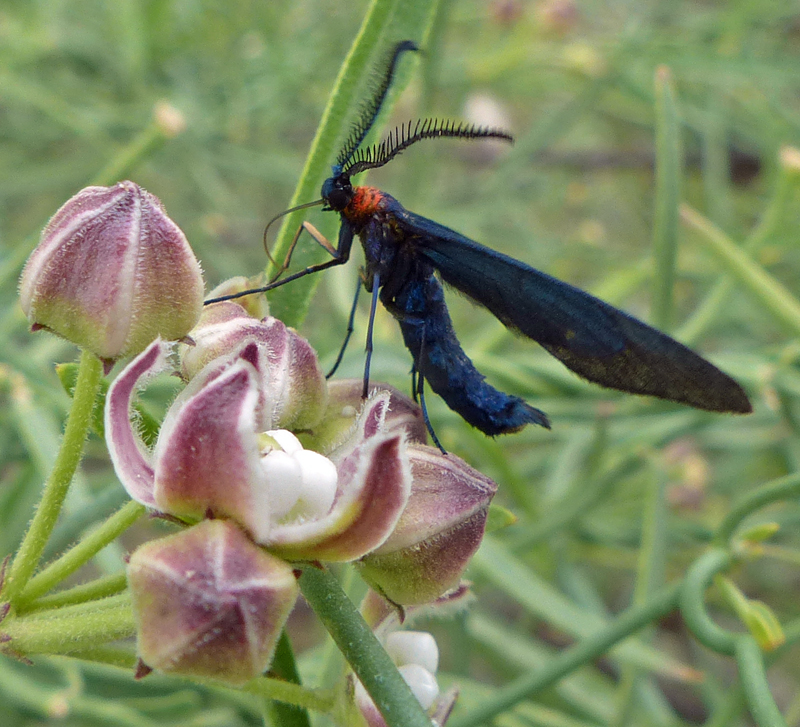
You can tell by its spectacular comb-like antennæ that it’s a moth — the imago of a Grapeleaf Skeletonizer (Harrisina sp.). In this adult format, the metallic blue moth is harmless enough, here sipping nectar from a milkweed flower. It will only live a few days, which it will spend mating and laying eggs, which will hatch into beautiful caterpillars that will efficiently denude plants like grapes and virginia creepers of their foliage. Meanwhile, it wants you and any other looming predators to think it’s a wasp and leave it alone — a strategy that works pretty well, until you notice those telltale pectinate antennæ, a dead giveaway for mothliness.
(Photo A.Shock)








